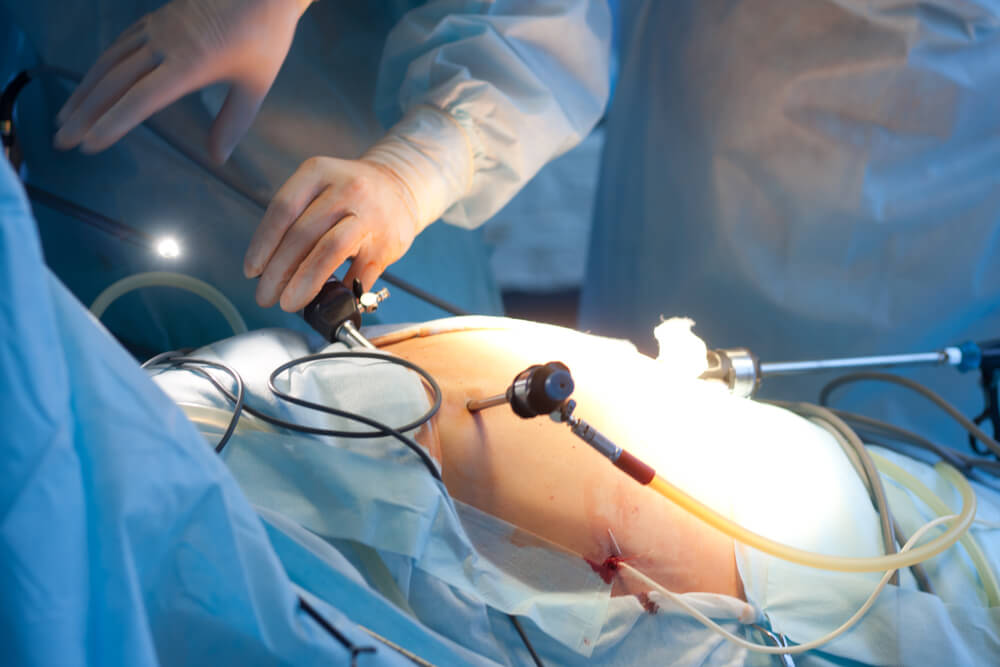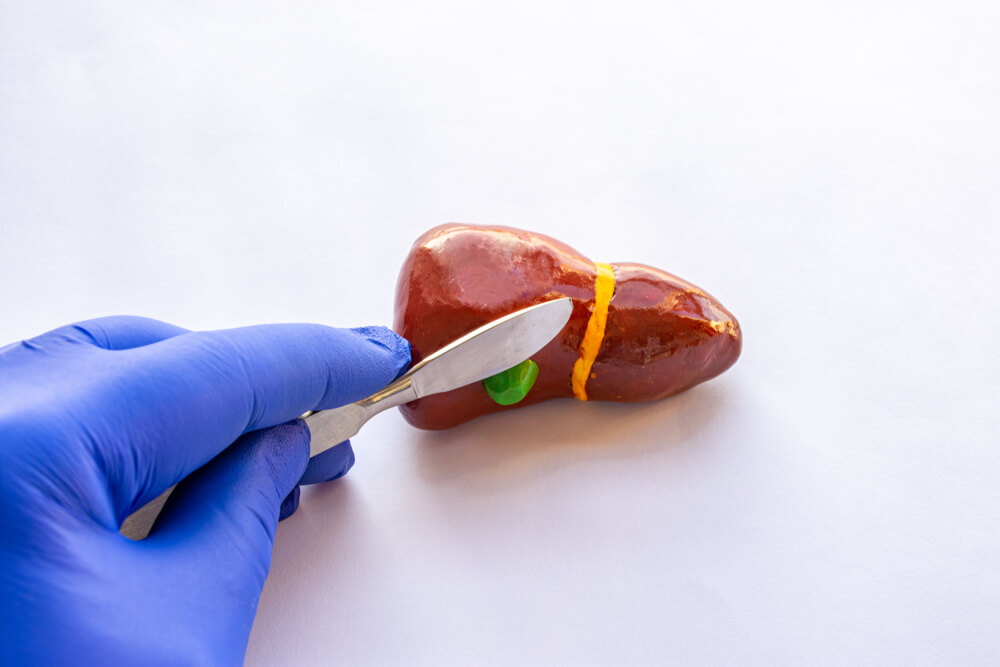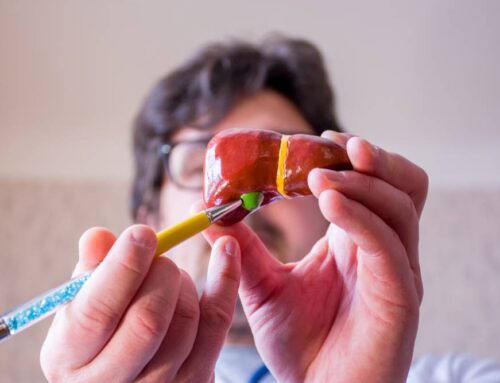Chances are good that most people who read this have never given their gallbladder much thought. Quite a few of them will probably not even be able to say where exactly it is located. But this fairly small organ can cause problems far beyond its size. Below we will explain what the gallbladder is, the signs and symptoms that might be an indication of gallbladder problems, and what you can expect if the doctor decides that your gallbladder should be removed.
What Is the Gallbladder and What Does It Do?
It’s a small organ shaped like a teardrop located right below your liver. The gallbladder’s main job is to store the bile made by your liver. Bile is released when you eat and helps with food digestion, particularly fatty food.
The good news is that you can actually live quite well without a gallbladder – the liver simply takes over its functions. The bad news is that if your gallbladder starts to malfunction, you will start developing very unpleasant symptoms and you can even end up needing emergency gallbladder surgery.
According to Mayo Clinic researcher Dr. Bingener-Casey, about 10 percent of women and 6.7 percent of women have gallstones, and well over a million Americans are hospitalized for gallstones every year. The main contributing factor is the fatty foods consumed by most of us. Luckily, removing the gallbladder is a relatively simple operation. See “The two types of gallbladder surgery” below for more detail.
Signs That Your Gallbladder Might Have to Be Removed
If you experience pain or suffer any of the symptoms below, you might have gallstones. These are small stones that form in a defective gallbladder. Not only can they severely irritate the gallbladder, but they can also impede the flow of bile.
– A sharp, piercing pain in your stomach
– Nausea, often accompanied by vomiting
– Fever
– Yellowing of the whites of your eyes and your skin (jaundice)
If this sounds like you, a visit to your family doctor has become necessary. Don’t postpone this until the last possible moment. That can lead to emergency gallbladder removal.

Preparing for Gallbladder Surgery
A gallbladder doctor in Palm Beach County will know exactly when is gallbladder surgery necessary and when not. If he or she recommends that you have your gallbladder removed as soon as possible, the two of you will have to work together to prepare you for the surgery. To do that, the doctor has to know if any of the following applies in your case:
– You use prescription medicine other than what he or she has prescribed
– You use a blood thinner
– You use one or more over-the-counter medicines
– You use any patches or creams
– You suffer from sleep apnea
– You have a heart device such as an AICD (Automatic Implantable Cardioverter Defibrillator)
– You regularly take supplements such as minerals, vitamins, herbs, or other home remedies
– You are allergic to certain kinds of medication
– You are allergic to certain materials, including latex
– You take recreational drugs
– You smoke
– You regularly consume alcohol
– You previously suffered from a negative reaction to anesthesia
– You are not prepared to get a blood transfusion
Depending on the severity of your condition and your answers to the above questions, your doctor might refer you to a gallbladder specialist.
The Two Types of Gallbladder Surgery
There are two different types of surgical procedures for removing a gallbladder. Both take place under general anesthesia. This, of course, means that you will be sleeping and the whole procedure will be painless.
It is important to discuss which of the two options is best for you with your doctor.
Laparoscopic cholecystectomy, sometimes also called keyhole cholecystectomy. This is the preferred option for most people, provided that there are no complicating factors. The surgeon makes a couple of tiny incisions (keyholes) in your abdomen. Next, he or she inserts a thin, lighted tube (called a laparoscope) through one of the holes. This enables them to see inside your abdomen.
The next step is to insert one or more medical instruments such as a small camera through the other cuts. That is followed by pumping gas into your abdomen to make it bigger. The purpose of this is much more benign than it sounds: it simply gives the surgeon more space to see and work.
Using the laparoscope and one or more of the other instruments, the surgeon then removes the gallbladder. Afterward, he or she will close the incisions with surgical tape, staples, glue, or small stitches. These will automatically disappear during the healing process, so there’s no need to have them removed later.
A major benefit of this method is that you will be able to go home sooner and the recovery process will be shorter. The whole procedure can be over in less than 2 hours and patients are often able to leave the hospital on the day of the operation.
Open cholecystectomy. Sometimes a Laparoscopic gallbladder removal operation might not be feasible. Possible reasons could include scar tissue in your abdomen from a previous operation or severe gallbladder disease. With open cholecystectomy, the doctor will make one relatively big incision in your abdomen through which he or she will access and remove the malfunctioning gallbladder In this case the incision is typically closed with stitches and covered with a dressing.
Risks of Gallbladder Removal Surgery
Surgery to remove the gallbladder is typically a standard procedure with little risk involved. Complications are not common. But, as in all surgical procedures, there is a small risk that they might develop. These can include:
– Bleeding
– Bile leakage
– The surgery area becomes infected
– Blood clots
– Cardiac issues
– Hernias, i.e. a part of your intestines, gut, or nearby tissue bulges through the surrounding muscles
– A Laparoscopic procedure can sometimes turn into an open cholecystectomy if the doctor is unable to see the gallbladder clearly. This will make it impossible for him or her to safely remove it. The only option will then be open surgery. The risk of this happening is small, but to put your mind at ease you should nevertheless discuss it with your doctor before the time.
Let us say this again: the risk of any complications developing is small. However, delaying necessary gallbladder removal surgery by more than 6 days makes it more likely that surgical complications could develop. It also increases the chances that you will have to undergo open-abdomen surgery instead of a much less invasive Laparoscopic operation. This is according to research recently carried out by a team from the Mayo Clinic.

How Should You Care for Your Incision?
It’s normal for the skin below the incision to feel numb for some time. This will go away after a while. By the time you go home, your surgical incision will already have started to heal. Before leaving, take a look at the incision with a nurse so you can see what it looks like. While you are recovering at home, you might see liquid coming from the incision. Mention this to your doctor.
Bandages should be changed daily until there isn’t any drainage coming from the incision. Steri-Strips will fall off by themselves. If they don’t, you can safely remove them after 10 days. Glue over your stitches will also loosen and fall off just like Steri Strips.
How Soon Will You Fully Recover From a Gallbladder Removal Operation?
How long it takes for you to recover completely after your gallbladder was removed will depend on whether you had a Laparoscopic or an Open Cholecystectomy.
Laparoscopic
The majority of patients can go home on the day of the surgery or the following day. If you leave the hospital on the same day as the operation, make sure there’s somebody to keep an eye on you for at least 24 hours, since you could still feel a bit groggy from the anesthesia. Depending on what type of work you do, you should be able to go back to work in around two weeks.
Open Cholecystectomy
Typically you will have to remain in the hospital for between three and five days afterward the operation. It will take between six and eight weeks before you have fully recovered.
If you require more information, or would like to talk to our specialists regarding your gallbladder issues, don’t hesitate to contact us, today!
Sources:
https://www.mskcc.org/cancer-care/patient-education/about-your-gallbladder-removal-surgery




